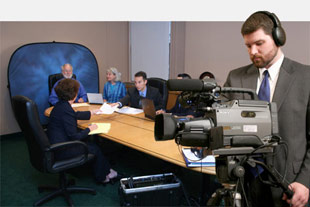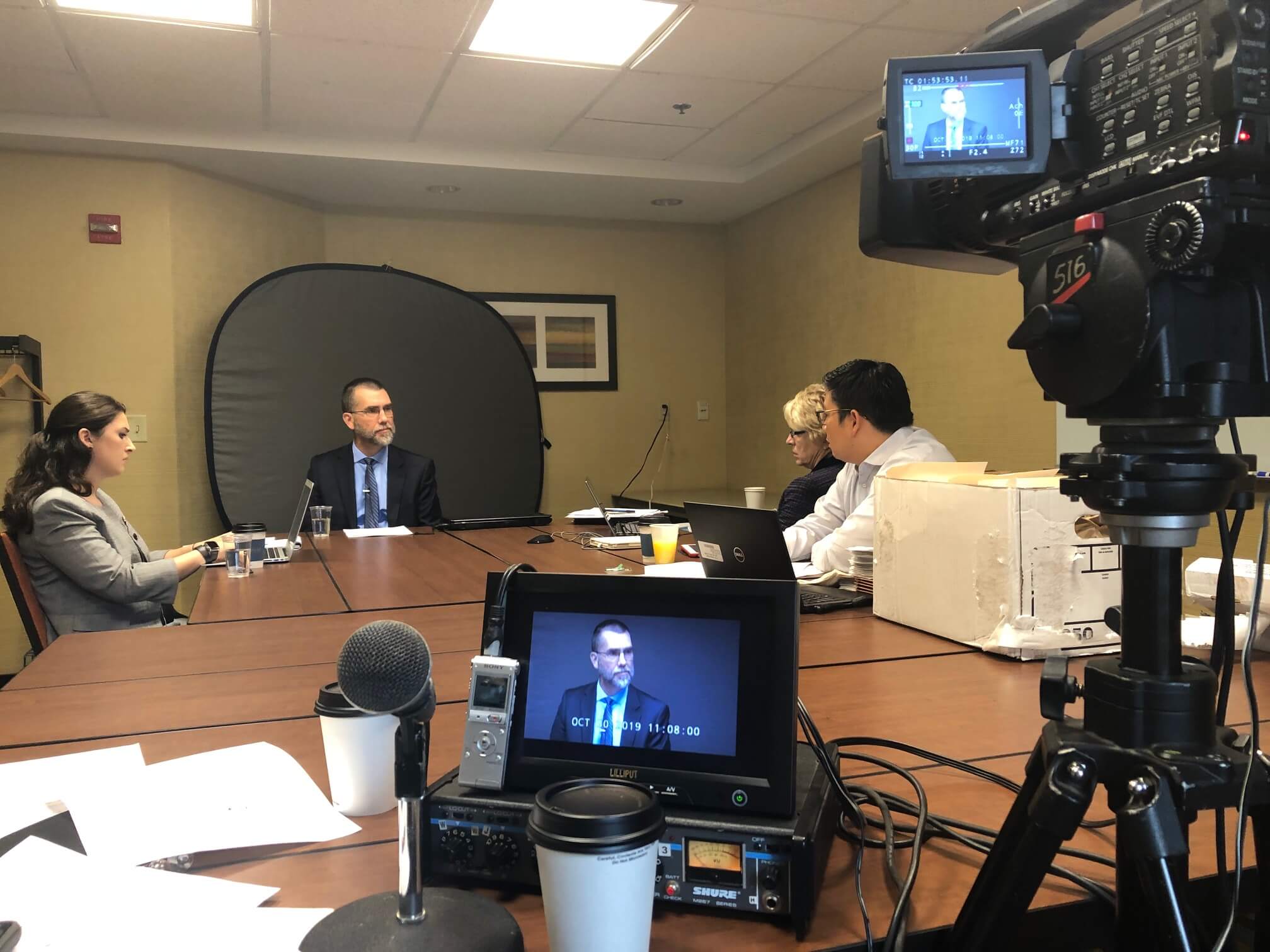The Ultimate Overview to Legal Videography for Lawyer and Legal Teams
The Ultimate Overview to Legal Videography for Lawyer and Legal Teams
Blog Article
Diving Into the Mechanisms of Lawful Videography: Unveiling Its Procedure in Shielding Authentic Visual Statement for Judicial Proceedings
In the realm of judicial process, the duty of legal videography stands as a foundation in protecting and presenting visual evidence. As innovation continues to development, the systems behind legal videography have become significantly elaborate, supplying a crucial layer of credibility to statements caught on video. By delving into the functional ins and outs of lawful videography, one can reveal the careful processes that safeguard the stability of visual evidence offered in courts - Legal Videography. This exploration not just drops light on the historical development of legal videography but additionally means the future trends that might additionally change exactly how visual testaments are promoted in the realm of justice.
Historic Development of Legal Videography
Analyzing the historic development of lawful videography exposes a significant change in the recording and discussion of aesthetic proof within the legal landscape. In the past, legal process heavily depended on created photos and records to record events and give evidence. With the introduction of video clip technology, the legal industry experienced a paradigm change in how visual statement was recorded and presented.
The development of lawful videography can be mapped back to the late 20th century when developments in video clip recording tools made it extra accessible for use in courtrooms. This technical development not just improved the precision and integrity of aesthetic proof however likewise changed the means instances existed to discretionary (Legal Videography). Lawyers started to identify the influential power of video clip recordings in sharing emotions, nuances, and non-verbal signs that written photos or transcripts alone can not capture efficiently

Modern Technology Improvements in Video Paperwork
What vital technical improvements have reinvented video paperwork in the legal field? The lawful field has seen significant advancements in video paperwork innovation that have enhanced the credibility and reliability of aesthetic proof in judicial procedures. One of the key developments is high-definition (HD) video clip recording abilities, which supply crystal-clear images and sharp information that are critical for accurately recording statements, face expressions, and other visual hints. Additionally, the integration of timestamping and metadata attributes in video documents tools has enabled exact documentation of when and where the video clip was taped, making certain the stability of the evidence provided in court.
Additionally, improvements in video clip encryption and watermarking modern technologies have bolstered the protection and tamper-proof nature of video clip proof, protecting it against unapproved modifications or meddling. Furthermore, the development of cloud storage solutions and remote access abilities has structured the storage space, retrieval, and sharing of video proof, facilitating seamless partnership amongst attorneys and making sure effective access to important aesthetic testaments when required. These technical innovations in video clip documents have unquestionably reinvented the lawful area, enhancing the accuracy, integrity, and admissibility of aesthetic proof in judicial proceedings.
Duty of Lawful Videographers in Court Room Setups
The evolution of video documentation technology in the legal field has demanded an essential duty for lawful videographers in court room setups, guaranteeing the honesty and dependability of aesthetic testimonies offered during judicial proceedings. Legal videographers play a basic function in recording and maintaining precise aesthetic evidence that can be crucial in court instances. Their obligation encompasses establishing devices, videotaping process, and producing top quality videos that properly show the events in the court room.
In courtroom settings, legal videographers have to stick to index stringent standards and standards to preserve the credibility of the visual document. They must possess an eager eye for detail and a comprehensive understanding of lawful procedures to ensure that the video footage they record is a true depiction of the events that took place. Additionally, legal videographers often work very closely with legal teams to make sure that the video clip evidence straightens with the case's demands and can be effectively provided in court to support the legal debates being made. Overall, the function of lawful videographers in court room setups is vital in upholding the principles of justice and making certain the transparency of lawful process.

Ensuring Admissibility and Stability of Video Proof
To maintain the reliability of visual proof presented in legal process, ensuring the admissibility and stability of video clip proof is a critical obligation for lawful videographers. Admissibility refers to the acceptance of evidence by the court, and for video clip evidence to be acceptable, it must meet specific requirements. Lawful videographers play an essential function in making certain that the video clips they capture conform with the regulations of evidence, such as relevance, authenticity, and integrity.
Stability of video proof involves maintaining the creativity and precision of the video from the time it is videotaped until it is presented in court. This includes firmly saving the video clip documents, documenting the chain of protection, and avoiding any kind of tampering or changes. Lawful videographers have to adhere to strict methods to assure the stability of the video proof and prevent any kind of obstacles to its credibility.
Future Trends in Legal Videography
Provided the increasing reliance on technology in lawful process, legal videographers are poised to accept ingenious improvements shaping the future of visual testimony capture and presentation. Among the famous patterns imminent is the combination of digital reality (VR) and augmented truth (AR) innovations right into lawful videography. These technologies have the possible to reinvent how visual proof exists in courts, permitting courts and juries to submerse themselves in the scene of the criminal offense or case.
Additionally, using expert system (AI) formulas for video evaluation is anticipated to streamline the procedure of reviewing and examining big amounts of video clip footage. AI can aid in determining vital moments, anomalies, and patterns within video clips, enhancing the effectiveness of lawful investigations.

Final Thought
To conclude, lawful videography has played an important duty in giving authentic aesthetic evidence for judicial procedures. With technical developments and the expertise of lawful videographers, the stability and admissibility of video proof are made sure in court room settings. As lawful videography remains to progress, it will be vital to support standards that maintain the precision and integrity of visual testament for the future of lawful proceedings.
Analyzing the historic development of legal videography exposes a significant improvement in the recording and presentation of visual evidence within the lawful landscape.The evolution of video paperwork technology in the legal field has actually demanded a vital duty for legal videographers in court setups, making certain the stability and dependability of aesthetic statements offered throughout judicial process. In addition, lawful videographers typically work very closely with lawful groups to make certain that the video clip evidence straightens with the instance's needs and can be effectively presented in court to support the lawful debates being made.To keep the integrity of aesthetic proof provided in legal process, making certain the admissibility and honesty of video clip proof is an essential responsibility for legal videographers. As lawful videography proceeds to evolve, it will certainly be vital to maintain criteria that keep the precision and dependability of visual testimony for the future of legal process.
Report this page